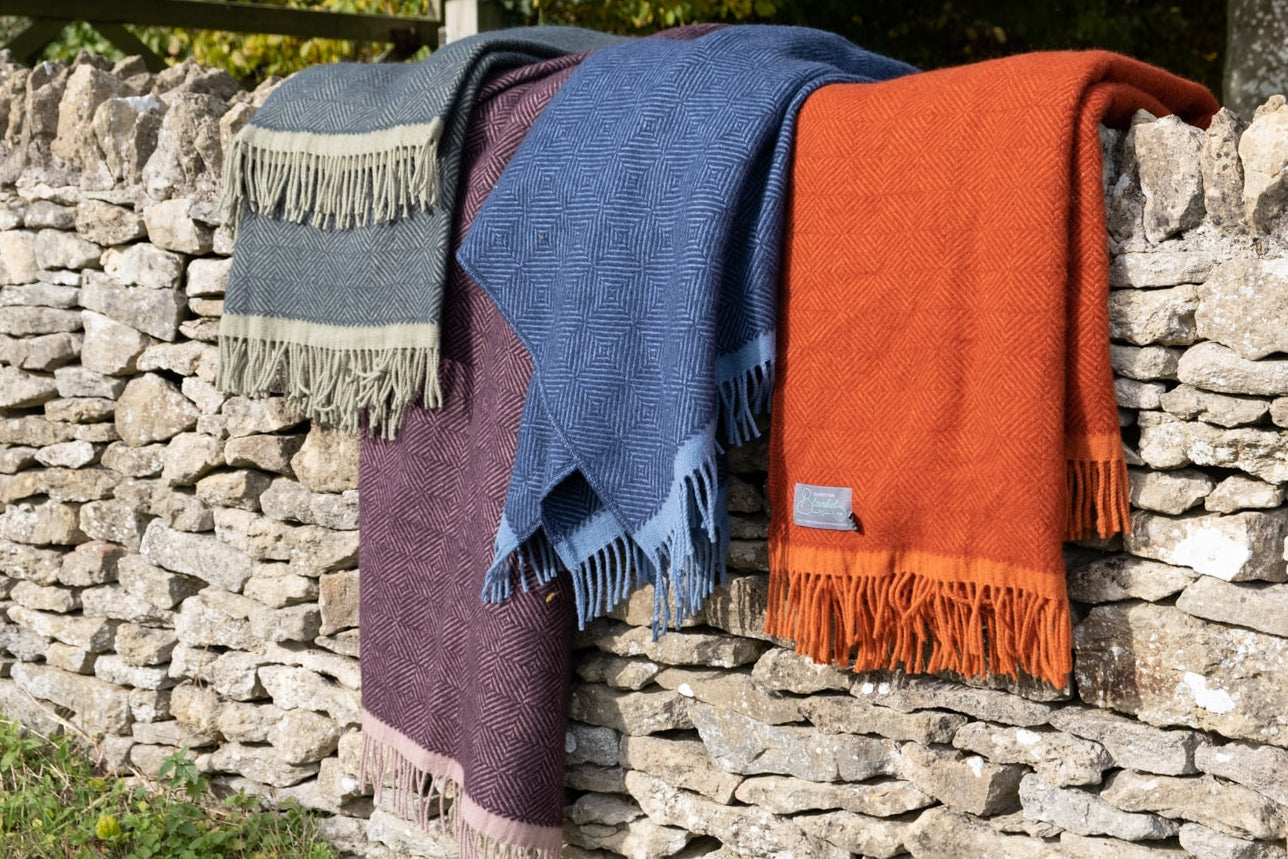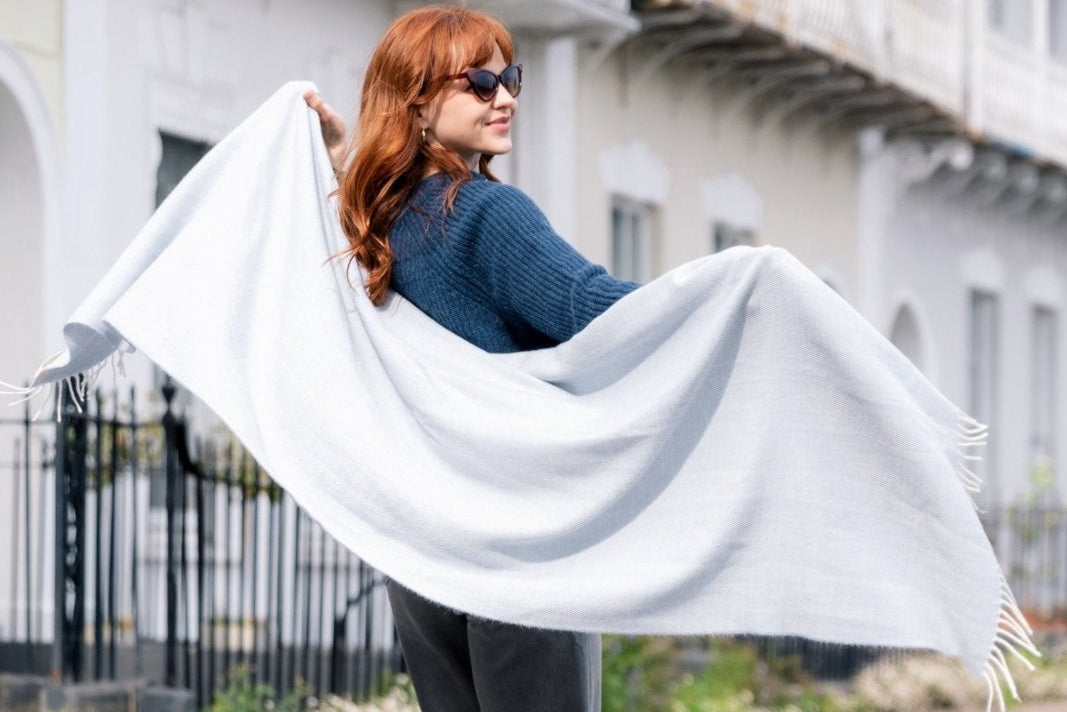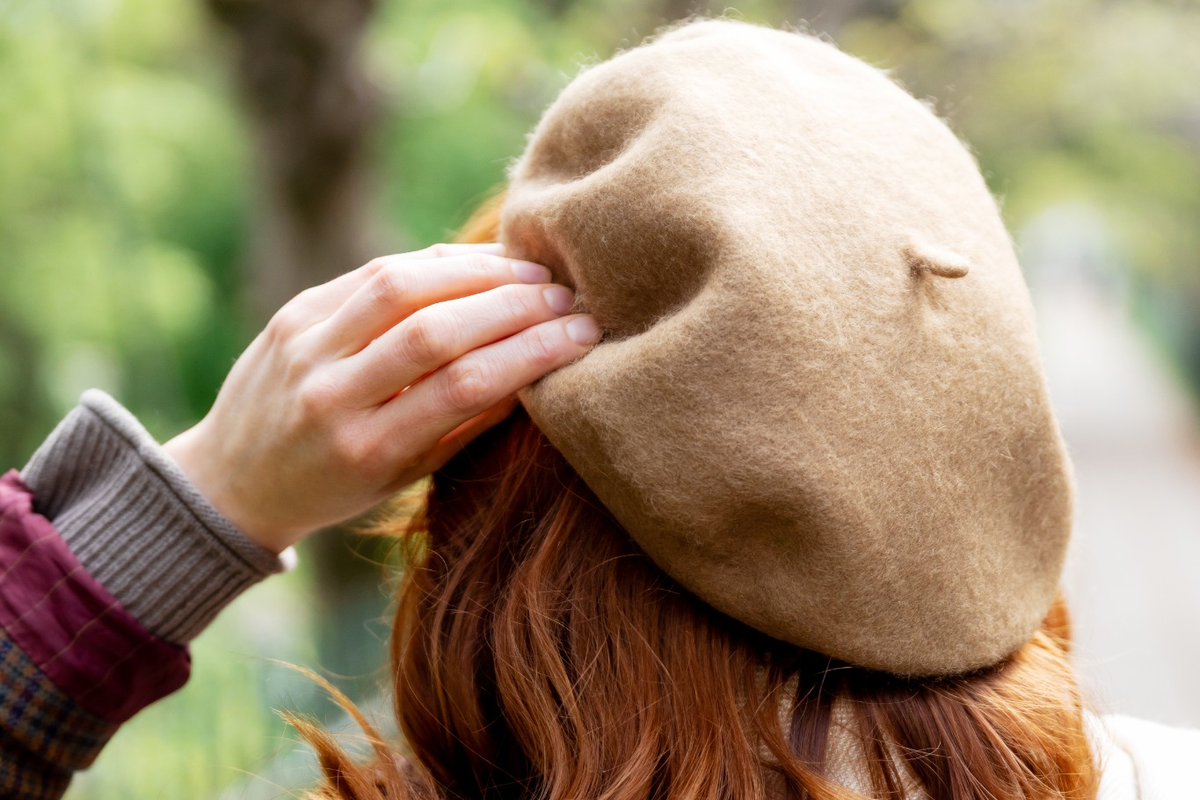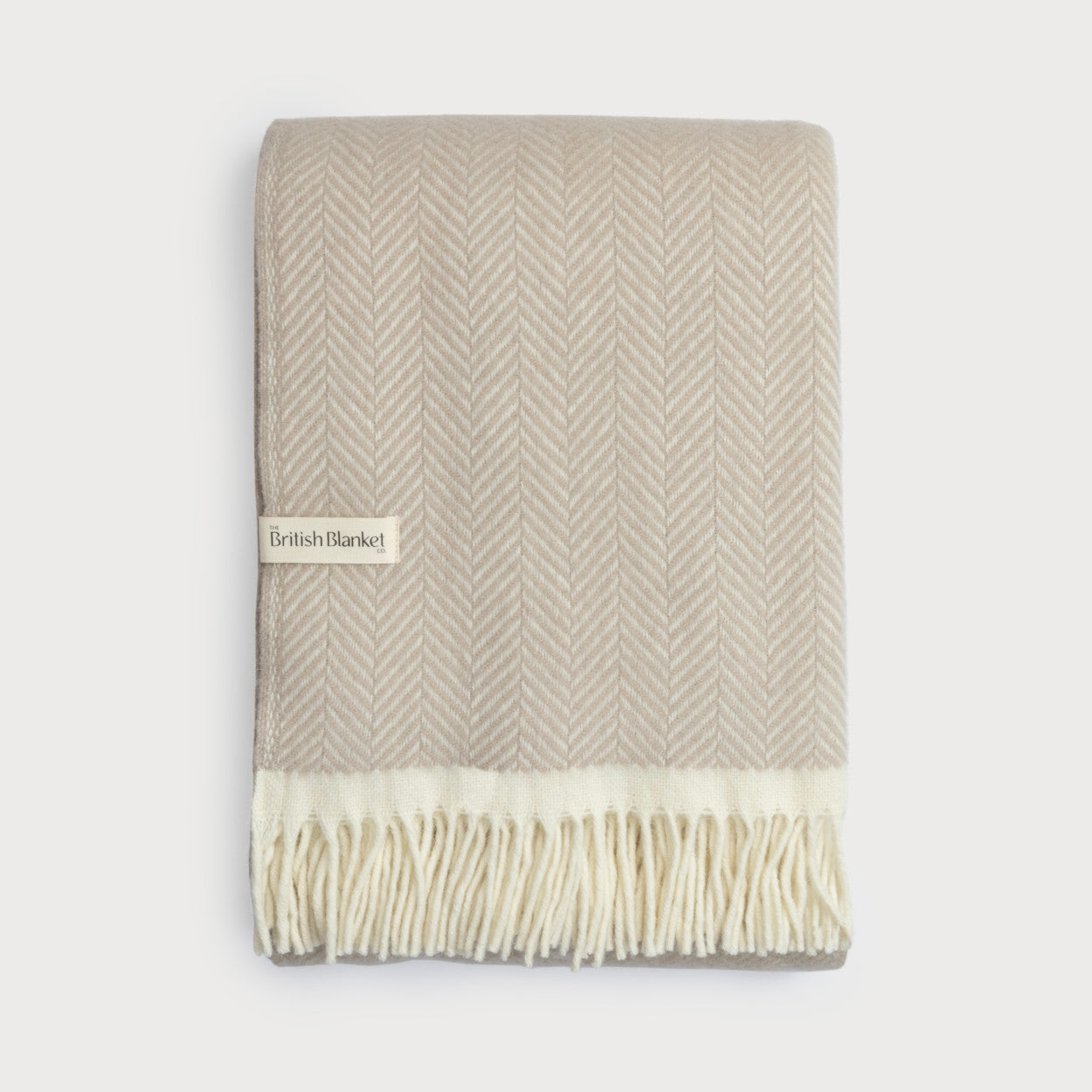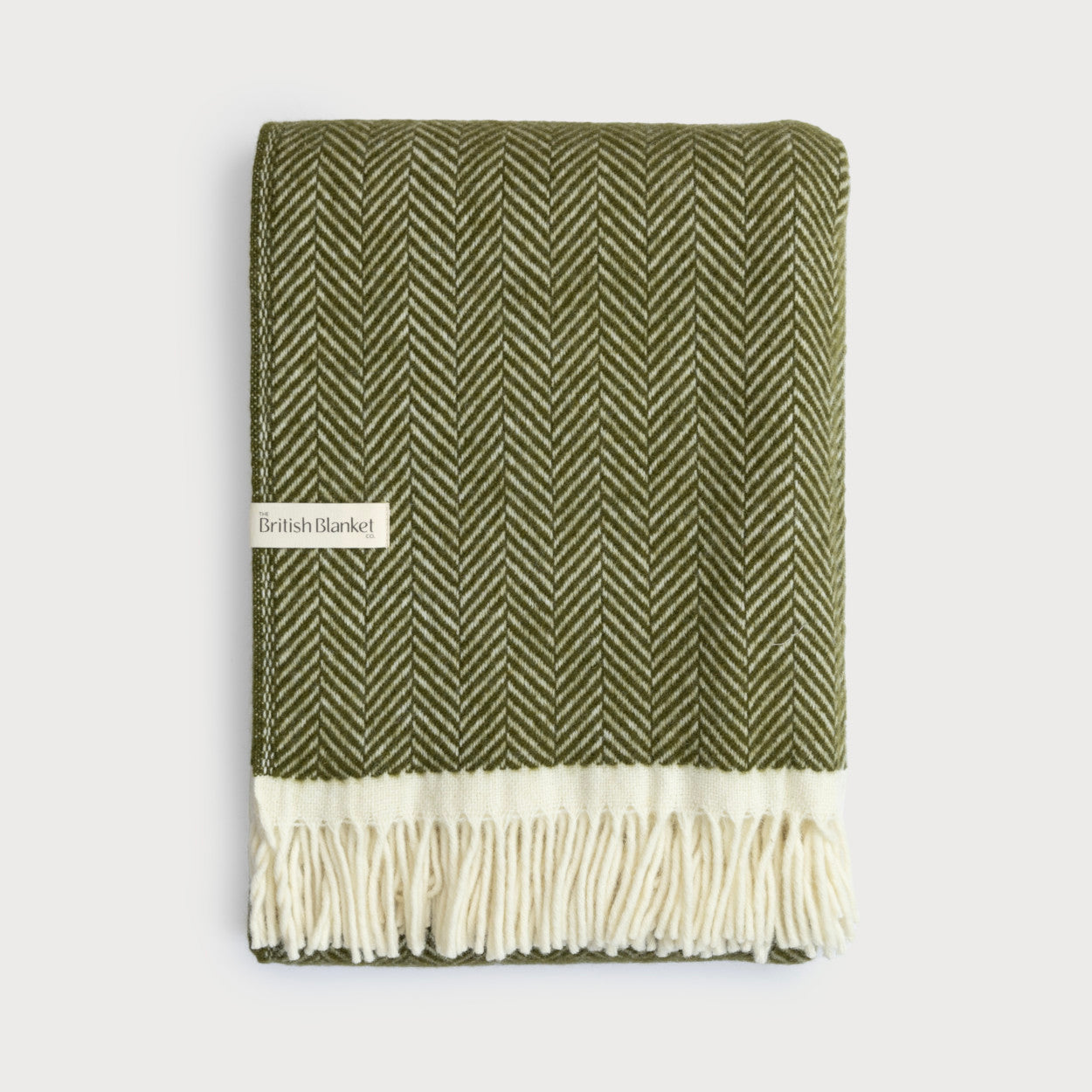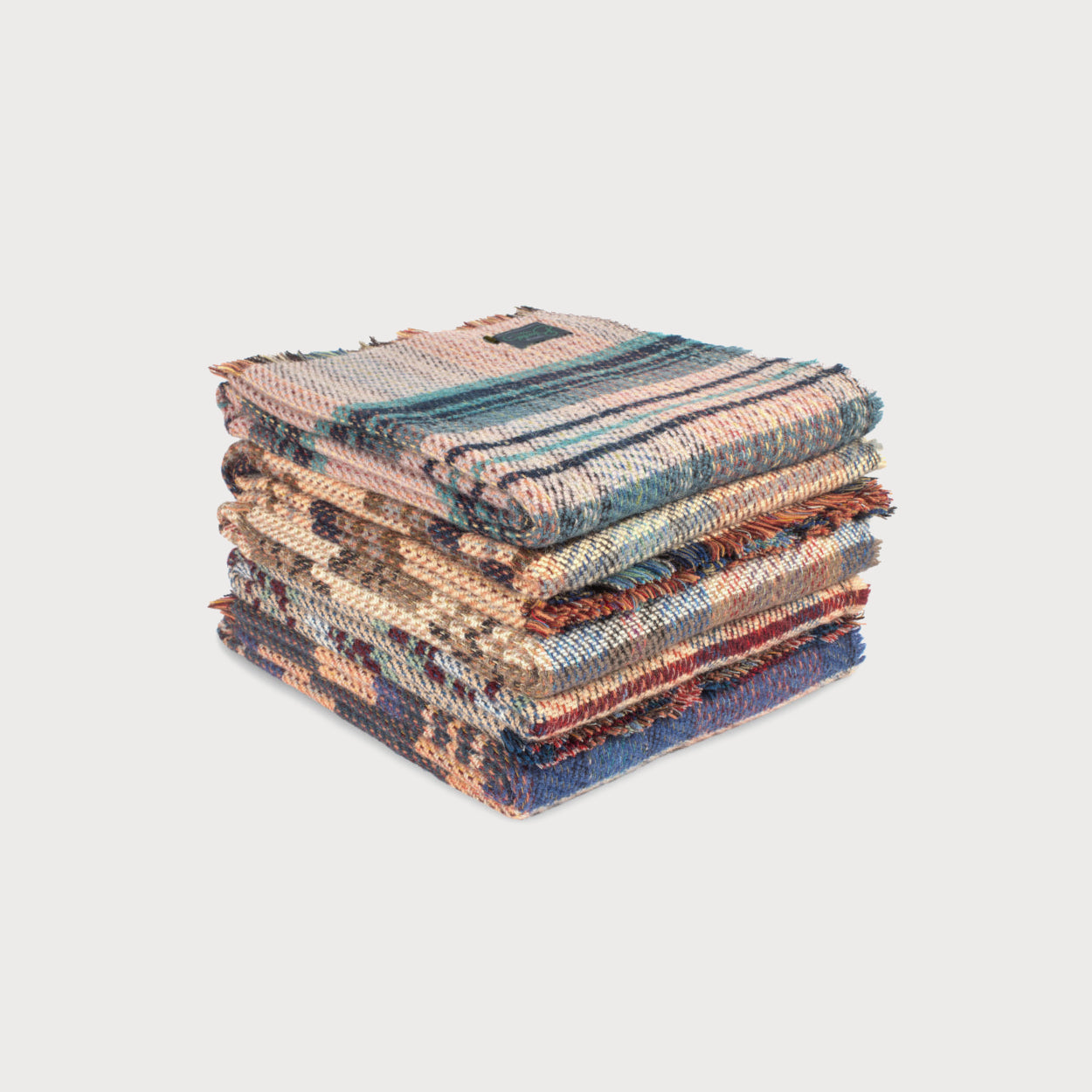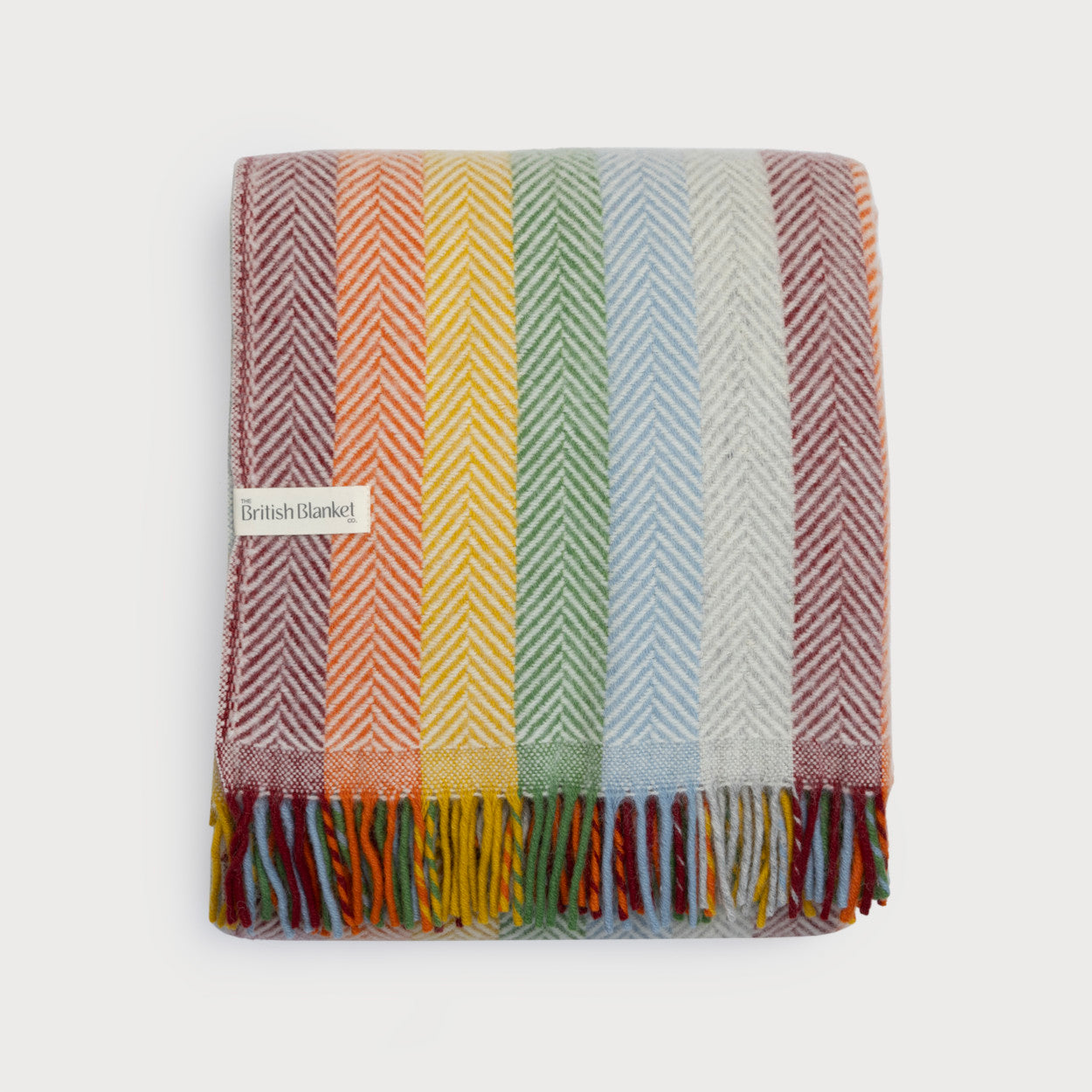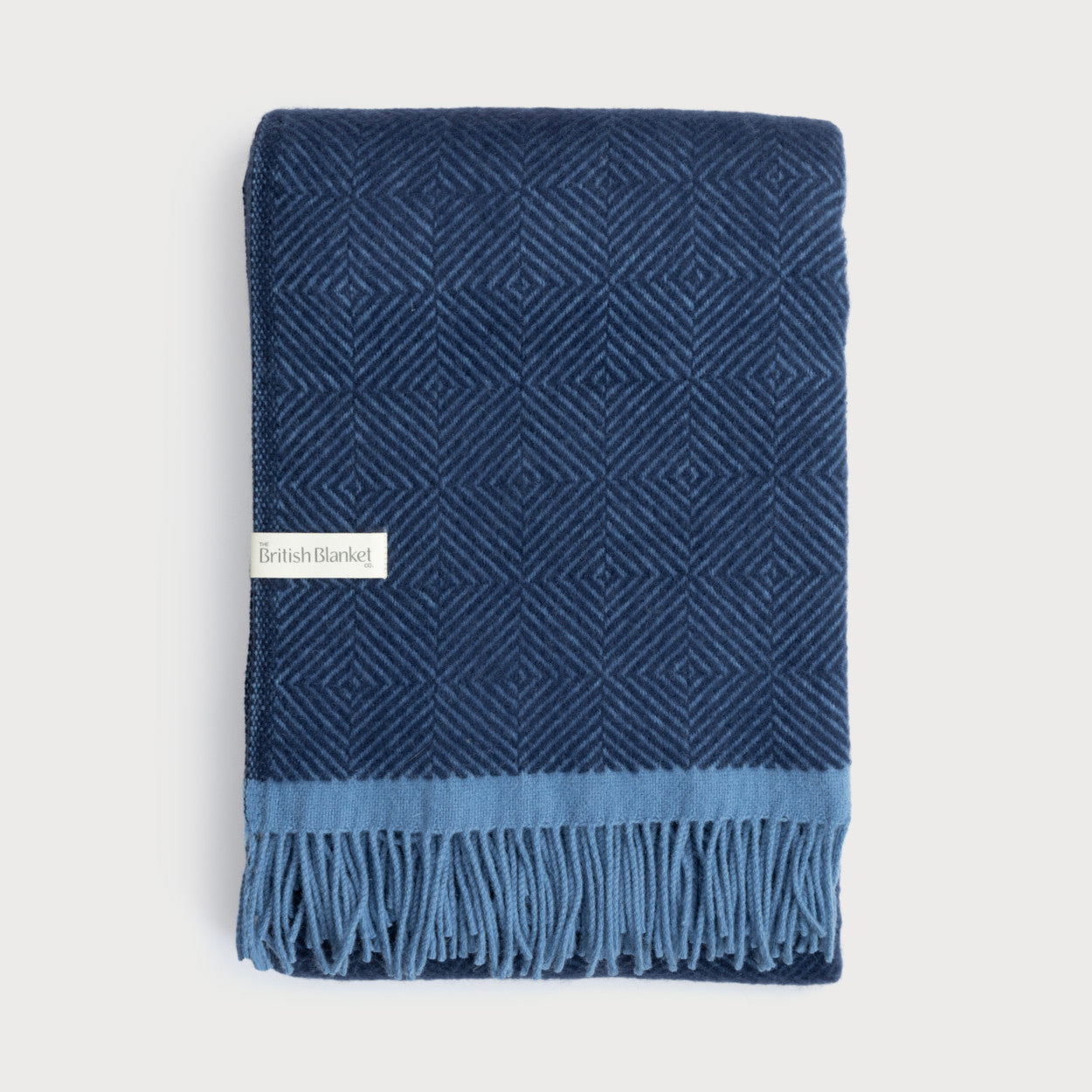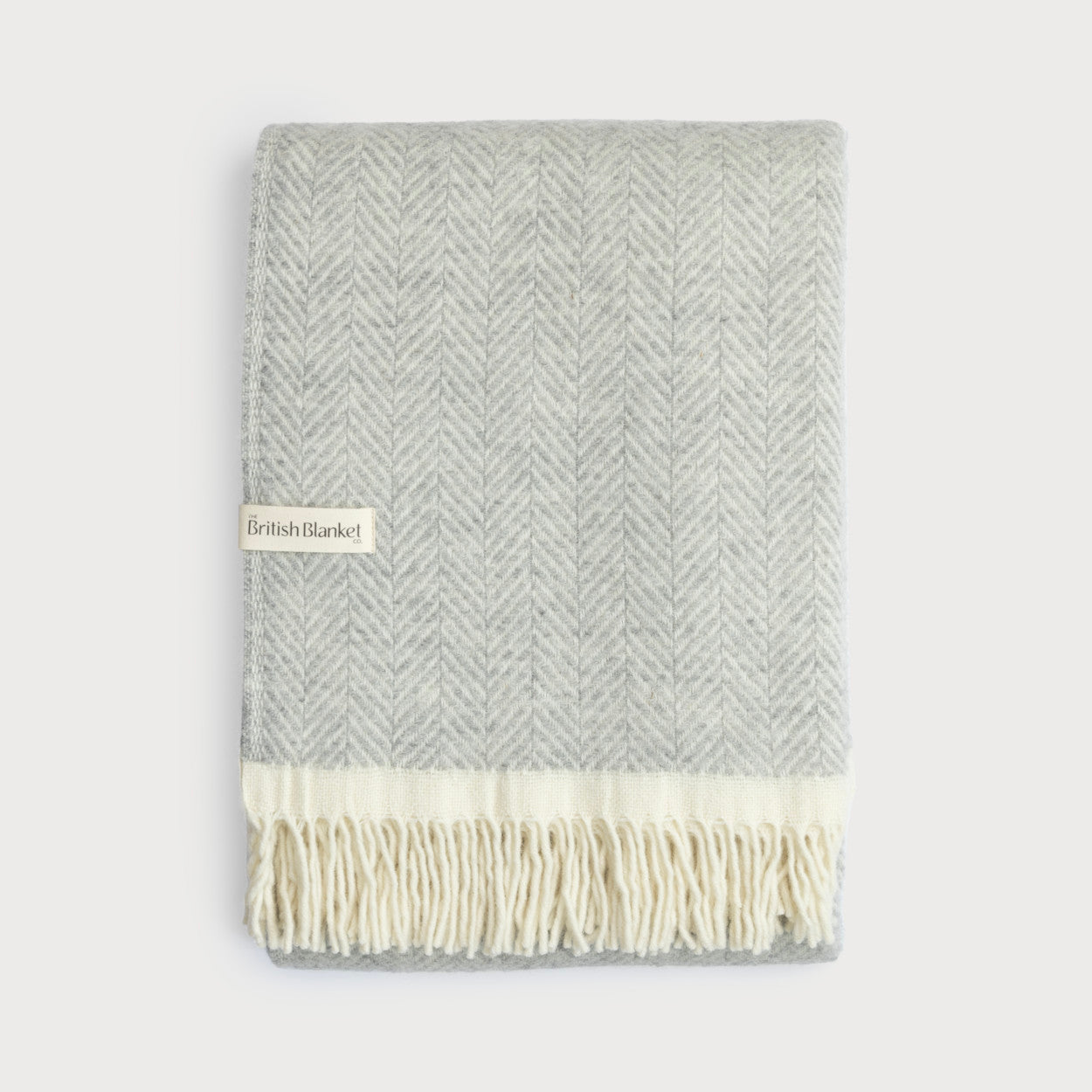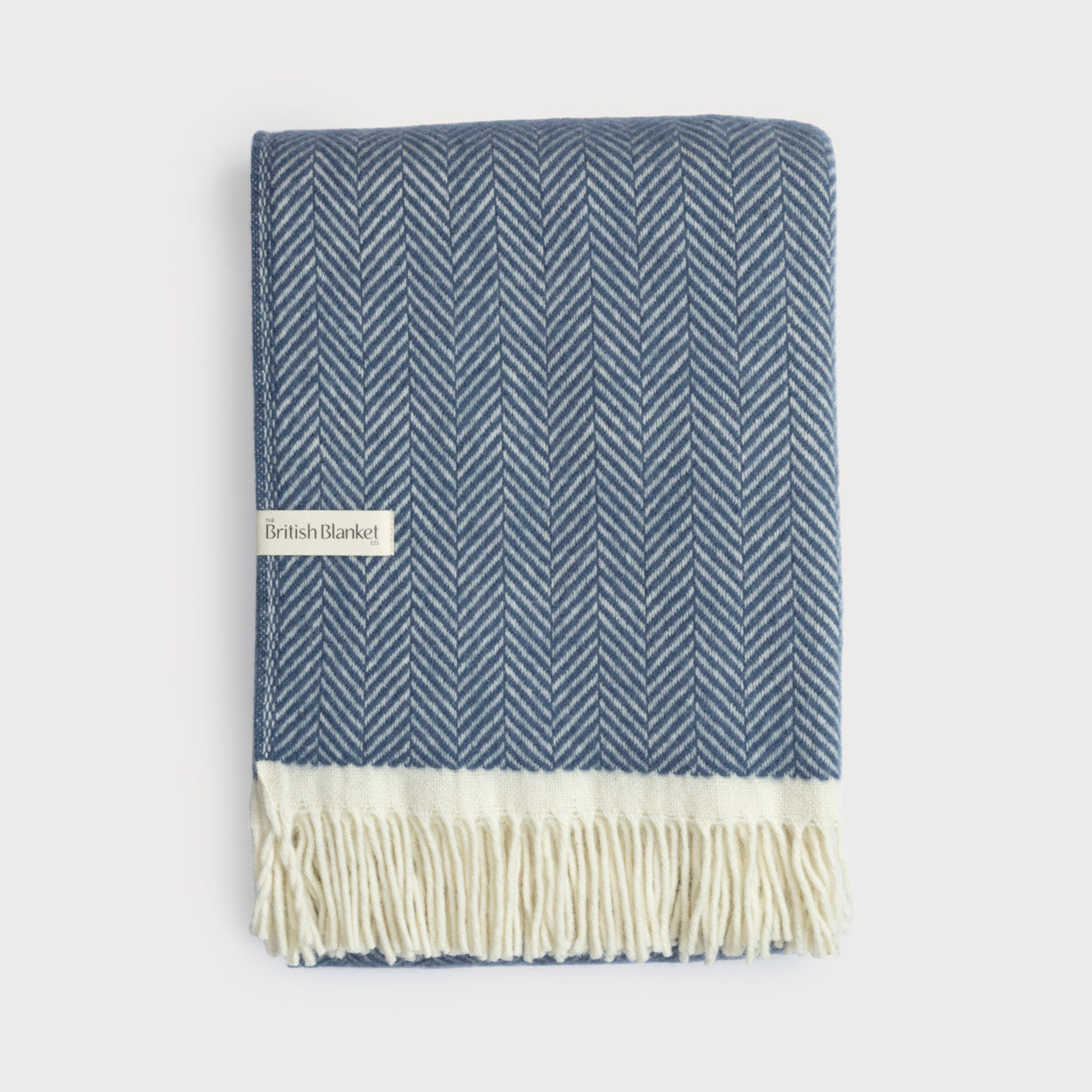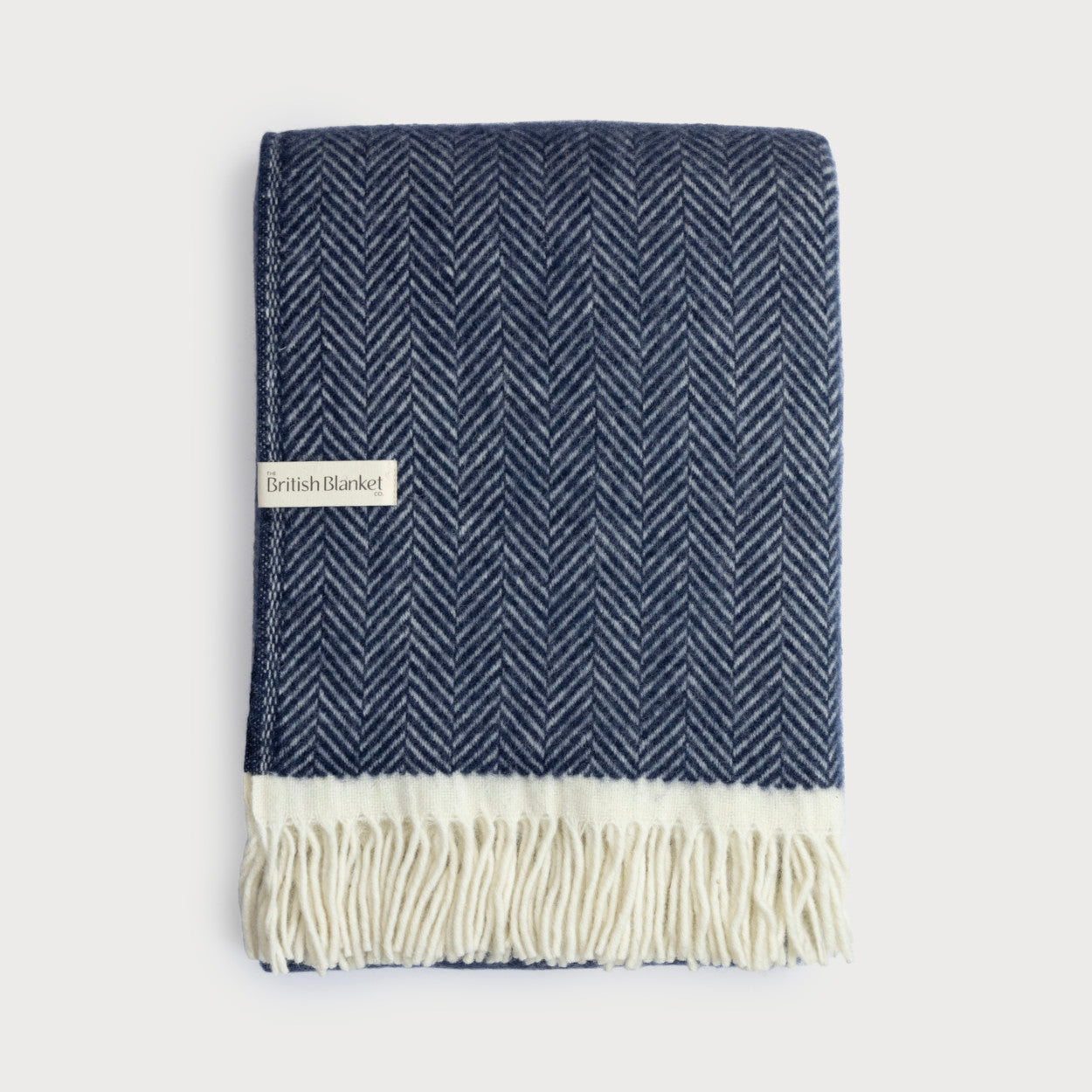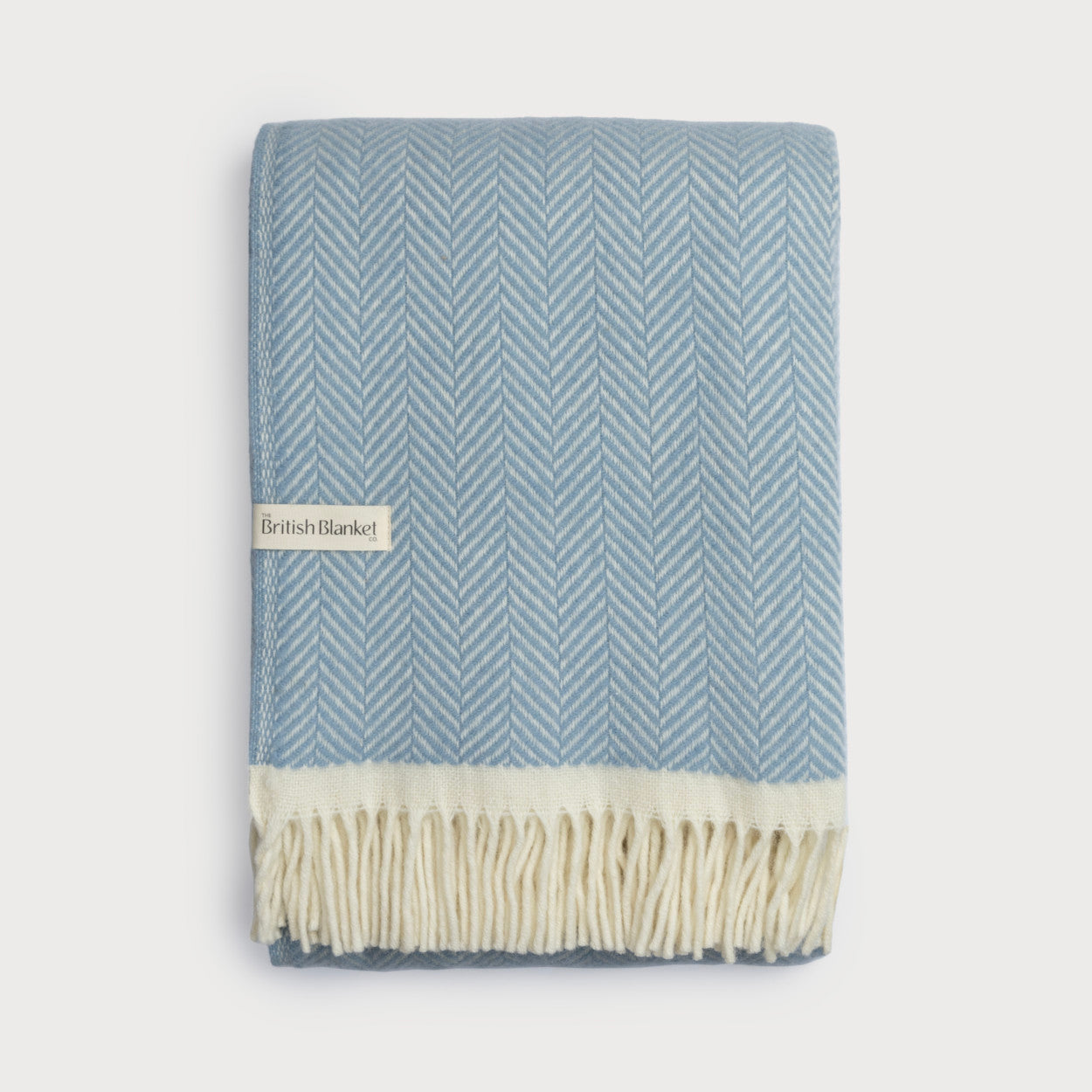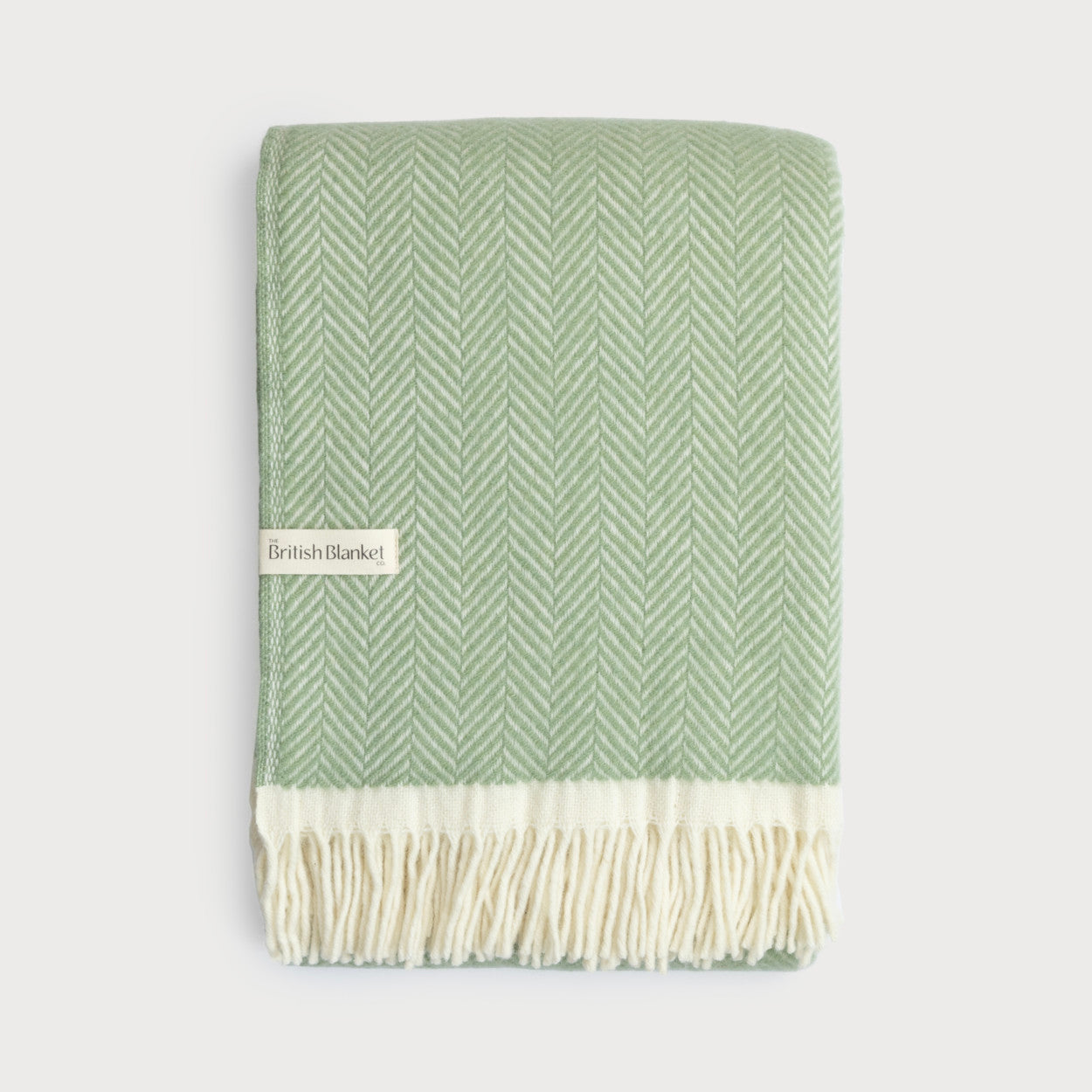It won't come as a surprise to anyone reading that we love wool! It's natural, beautiful, warm and long-lasting, making it the perfect material for weaving our cosy blankets. Read on and follow our simple guide to keep your wool blanket clean, fresh and looking its best for years to come.
Did you know that wool is naturally self-cleaning?
It sounds like quite a claim, but let me explain the science. The keratin in wool actually breaks down bacteria naturally. The core of each wool fibre strand is composed of two types of cells that absorb different amounts of moisture. One type swells more than the other causing a constant motion between the two. This characteristic creates a mechanical, self-cleaning effect. The natural breathability of wool means your blanket actually needs washing less than you might think and airing outside on the line is often all you need to freshen it up.
Spot cleaning
For the odd spill, spot cleaning is best. Use a detergent specially formulated for wool, moisten the affected area of your blanket with cold water and work the liquid soap sparingly into the area with a lint-free cloth or sponge. Avoid scrubbing too hard in one place as this can mat and stretch the fabric, it's better to be gentle and repeat a few times if necessary.
Machine washing
If your blanket is one of our pure wool collection of full-size throws, armchair throws or picnic rugs, it can be machine washed. Start by checking your machine has a completely cold setting - on some machines the wool setting is not actually cold. Select the minimum spin setting. Wash your throw separately to avoid snagging from buttons, zips etc.
Drying is as important as washing when caring for wool. It's important to remove the blanket from the drum as soon as the cycle finishes and reshape it whilst damp. Don't wring it out - instead you can roll your blanket inside a couple of dry towels to gently remove excess water - think Swiss roll! Dry your blanket flat or line dry ensuring the weight of the blanket is evenly distributed. Never tumble dry as your blanket will shrink. The texture of the blanket will change slightly after the first wash as the action of the machine causes loose fibres to mesh and felt together.
What's the best wool detergent?
Choose a PH neutral, mild liquid detergent that is specially formulated for wool - look for the Woolmark logo. Avoid heavy-duty biological detergents containing enzymes, or any detergents containing chlorine or bleach. Final rinse softeners or conditioners can be used, but keep the amount to minimum. A lot of softener can increase the formation of bobbles because it acts as a lubricant, enabling the fibres to move and felt more easily.
Dry cleaning
All our Finest Collection merino lambswool throws are suitable for dry cleaning only. You can also dry clean pure wool throws if you want to avoid the slight change in texture that machine washing will cause.
Removing bobbles (de-pilling)
When wool fibres are fluffy they mesh together, forming small bobbles, or "pills". Pilling is a direct result of friction so you are more likely to create bobbles if you use your throw in high-wear areas, such as the seat or back of a sofa, and when your blanket is new and fluffy. Pilling is easy to take care of with a lint roller and a de-pilling comb. Use a self-adhesive lint roller to remove loose fibres, then gently skim the pilling comb over the blanket in one direction.
We hope you love the natural beauty of wool just as much as we do! A little time and care spent on maintenance will reward you with a blanket that will last for many years.

